
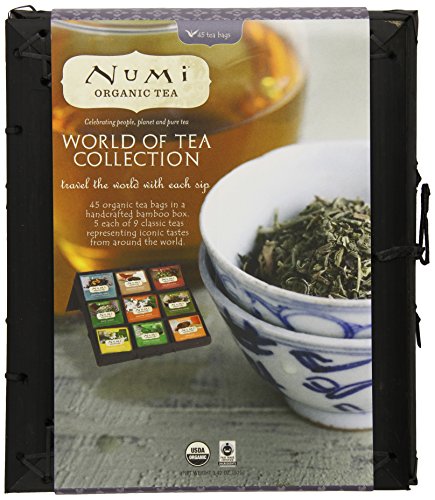
Numi Organic Tea Organic World of Tea Collection
45 organic teas representing iconic tastes from around the world. 5 bags each in a hand crafted bamboo chest of the following flavors which are breakfast blend, aged early grey, golden chai, mate lemon green, jasmine green, toasted rice green, rooibos, moroccan mint, chamomille lemon.

Tea Forte WORLD OF TEAS Sing Steeps Loose Leaf Tea Sampler, 15 Single Serve Pouches – Green Tea, Herbal Tea, Black Tea
The perfect measure for the perfect cup. Loose tea is in pre-measured pouches that brew a 12 oz cup. Includes: Three of each blend – Bombay Chai, Moroccan Mint, African Solstice, Sencha (organic), Estate Darjeeling.
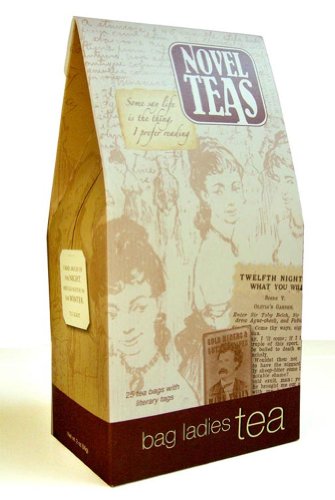
Novel Teas contains 25 teabags individually tagged with literary quotes from the world over, made with the finest English Breakfast tea.
Novel Teas Pouches contain 25 teabags individually tagged with literary quotes from the world over, made with English Breakfast tea. There is no better company than a steaming cup of tea as you open the cover of a favorite classic or turn the page of the latest thriller. Whether traveling to distant times and far off lands or discovering new characters in a nearby locale, a soothing cup of tea makes the journey more pleasurable and the memory lasting. Novel Teas ~ natures story unfolded in every leaf. Read ’em and steep!
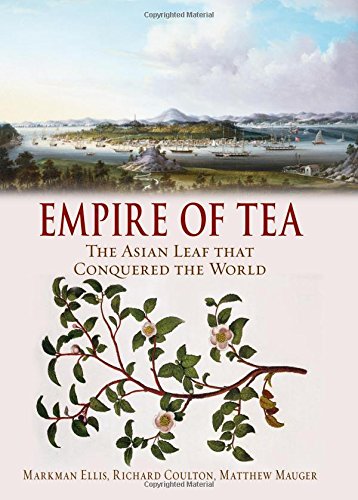
Empire of Tea: The Asian Leaf that Conquered the World
Although tea had been known and consumed in China and Japan for centuries, it was only in the seventeenth century that Londoners first began drinking it. Over the next two hundred years, its stimulating properties seduced all of British society, as tea found its way into cottages and castles alike. One of the first truly global commodities, tea has also, today, come to epitomize British culture and identity. This impressively detailed book offers a rich cultural history of tea, from its ancient origins in China to its spread around the world. The authors recount tea’s arrival in London and follow its increasing salability and import via the East India Company throughout the eighteenth century, inaugurating the first regular exchange—both commercial and cultural—between China and Britain. They look at European scientists’ struggles to understand tea’s history and medicinal properties, and they recount the ways its delicate flavor and exotic preparation have enchanted poets and artists. Exploring everything from its everyday use in social settings to the political and economic controversies it has stirred—such as the Boston Tea Party and the First Opium War—they offer a multilayered look at what was ultimately an imperial industry, a collusion—and often clash—between the world’s greatest powers over control of a simple beverage that has become an enduring pastime.
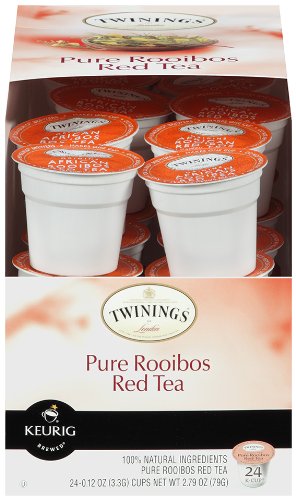
Twinings World Tea, African Rooibos Tea, 24-Count K-Cups For Keurig Brewers (Pack of 2)
Authentic Rooibos (pronounced roy-boss) or Herbal Red Tea comes only from the Cedarberg Mountains in the remote area of central South Africa. This herbal tea, made from the leaves of the Rooibos plant, has been enjoyed for countless generations by native South Africans. The plant is harvested in summer, fermented and then dried in the sun until it reaches a deep mahogany red color. Rich in antioxidants, and caffeine-free, Twinings African Rooibos Herbal Red Tea has a pleasantly sweet flavor. Great to drink with lunch or in the afternoon, this tea is best with a little milk or served plain. African Rooibos is a naturally caffeine free herbal tea with a distinctive reddish color and a pleasantly sweet flavor that naturally contains antioxidants.
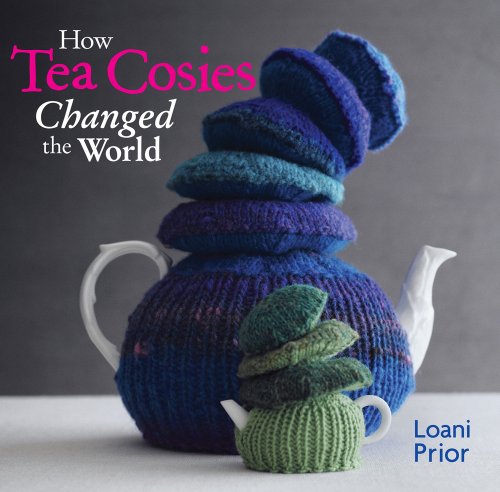
How Tea Cosies Changed the World
Be drawn into a world of creative passion with the vibrant designs featured in this follow-up to Really Wild Tea CosiesLoani Prior’s outrageous imagination has produced 24 new designs that transform the conventional tea cosy into a knitted piece of art. New tea designs include Lily of the Valley, Devilish, Spotted Gourd, Betty the Burlesque Dancer, Forest Bloom, and Starry Night. It’s not just about tea cosies though—readers can use the easy-to-follow instructions and try their hand at Loani’s knitted purse, or expand their skills with the double-knitted scarf. Full of humor, flair, and creativity, this book will delight and inspire adventurous knitters.
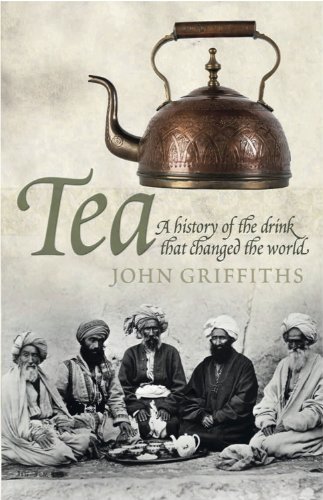
Tea: A History of the Drink That Changed the World
A fascinating account of the world’s favorite beverage from the son of Sir Percival Griffiths, author of the monumental and definitive tome The History of the Indian Tea Industry A study of the phenomenon as well as the commodity, this is a comprehensive survey of the drink that is imbibed daily by more than half the population of the world. After water, tea is the second most-consumed drink in the world. Almost every corner of the globe is addressed in this comprehensive look at 4,500 years of tea history. Tea has affected international relations, exposed divisions of class and race, shaped the ethics of business, and even led to significant advances in medicine. Thoroughly researched and captivating, this is a unique study of the little green leaf.

Disney World Parks Exclusive Mickey Mouse Coffee Scoop 2 Tablespoon Best of Mickey Body Parts Collection – NEW
Brighten up your morning with this stainless steel coffee scoop from Walt Disney World. Hold 2 tablespoons of Disney Blend coffee or you own favorite brand. Don’t forget to add a Disney coffee mug or two.
Uncommon Grounds: The History of Coffee and How It Transformed Our World
Uncommon Grounds tells the story of coffee from its discovery on a hill in ancient Abyssinia to the advent of Starbucks. In this updated edition of the classic work, Mark Pendergrast reviews the dramatic changes in coffee culture over the past decade, from the disastrous Coffee Crisis” that caused global prices to plummet to the rise of the Fair Trade movement and the third-wave” of quality-obsessed coffee connoisseurs. As the scope of coffee culture continues to expand, Uncommon Grounds remains more than ever a brilliantly entertaining guide to the currents of one of the world’s favorite beverages.
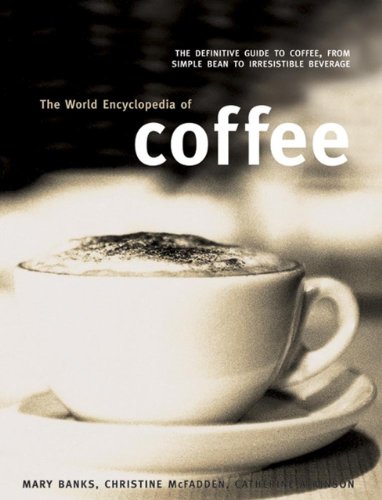
The World Encyclopedia of Coffee: The Definitive Guide To Coffee, From Simple Bean To Irresistible Beverage
An in-depth guide to all aspects of coffee: a fascinating history, a directory of the coffees of the world, how to make the different types of coffee drink, and more than 100 classic recipes.
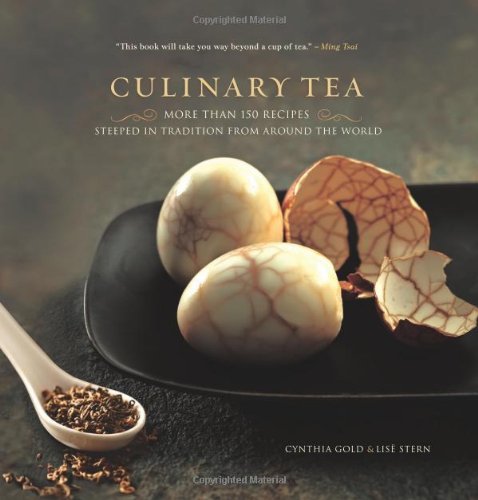
Culinary Tea: More Than 150 Recipes Steeped in Tradition from Around the World
This cutting-edge tome on one of the world’s oldest ingredients and most popular beverages will be an invaluable tool for both home and professional cooks. Gold and Stern offer new ways of looking at tea: the leaves with a history stretching thousands of years is now a secret weapon in the culinary arsenal.Tea in its many forms has been around for thousands of years, and is a burgeoning industry in many countries as the demand for specialty leaves grows. Read all about the picking and drying techniques virtually unchanged for centuries, popular growing regions in the world, and the storied past of trading.Culinary Tea has all this, plus more than 100 recipes using everything from garden-variety black teas to exclusive fresh tea leaves and an in-depth treatment of tea cocktails. The book will include classics, such as the centuries-old Chinese Tea-Smoked Duck and Thousand-Year Old Eggs, as well as recipes the authors have developed and collected, such as Smoked Tea-Brined Capon and Assam Shortbread.
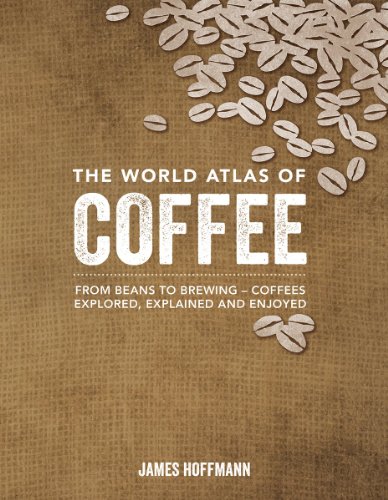
The World Atlas of Coffee: From Beans to Brewing — Coffees Explored, Explained and Enjoyed
A beautiful world guide to the brown bean. Taking the reader on a global tour of coffee-growing countries, The World Atlas of Coffee presents the bean in full-color photographs and concise, informative text. It shows the origins of coffee — where it is grown, the people who grow it; and the cultures in which coffee is a way of life — and the world of consumption — processing, grades, the consumer and the modern culture of coffee. Plants of the genus Coffea are cultivated in more than 70 countries but primarily in equatorial Latin America, Southeast Asia and Africa. For some countries, including Central African Republic, Colombia, Ethiopia, and Honduras, coffee is the number one export and critical to the economy. Organized by continent and then further by country or region, The World Atlas of Coffee presents the brew in color spreads packed with information. They include: The history of coffee generally and regionally The role of colonialism (for example, in Burundi under colonial rule of Belgium, coffee production was best described as coercive. Every peasant farmer had to cultivate at least 50 coffee trees near their home.) Map of growing regions and detail maps Charts explaining differences in growing regions within a country Inset boxes (For example, what is the Potato Defect? Is Cuban coffee legal in the United States?) The politics of coffee and the fair trade, organic and shade grown phenomena Beautiful color photographs taken in the field. Americans consume 400 million cups of coffee per day, equivalent to 146 billion cups of coffee per year, making the United States the leading consumer of coffee in the world. The World Atlas of Coffee is an excellent choice for these coffee lovers.

The Devil’s Cup: A History of the World According to Coffee
In this captivating book, Stewart Lee Allen treks three-quarters of the way around the world on a caffeinated quest to answer these profound questions: Did the advent of coffee give birth to an enlightened western civilization? Is coffee, indeed, the substance that drives history? From the cliffhanging villages of Southern Yemen, where coffee beans were first cultivated eight hundred years ago, to a cavernous coffeehouse in Calcutta, the drinking spot for two of India’s three Nobel Prize winners . . . from Parisian salons and cafés where the French Revolution was born, to the roadside diners and chain restaurants of the good ol’ U.S.A., where something resembling brown water passes for coffee, Allen wittily proves that the world was wired long before the Internet. And those who deny the power of coffee (namely tea-drinkers) do so at their own peril.
Timothy’s World Coffee DECAF Rainforest Espresso 120 K-Cups
Timothy’s World Coffee DECAF Rainforest Espresso 120 K-Cups This dark, rich, full-bodied coffee is smooth and sweet with a clean, clear finish. …
Timothy’s World Coffee French Roast for Keurig Brewers 24 K-Cups (4 Pack)
Timothy’s World Coffee French Roast for Keurig Brewers 24 K-Cups (4 Pack) Strong, Black, Tangy. Using a dark Parisian roast profile, this …
SunCafe Coffee Pod Brewer H701A – Red (includes 36 World Blend Regular Pods)
SunCafe Coffee Pod Brewer H701A – Red (includes 36 World Blend Regular Pods) Patented pod drawer works with a wide variety of …
Timothy’s World Coffee Nicaraguan Fair Trade Organic for Keurig Brewers 24 K-Cups (2 Pack)
Timothy’s World Coffee Nicaraguan Fair Trade Organic for Keurig Brewers 24 K-Cups (2 Pack) Velvety, Bright, Enticing. This medium roasted, pure origin …
Timothy’s World Coffee Italian Blend 120 K-Cups
Timothy’s World Coffee Italian Blend 120 K-Cups A smooth, light espresso blend that is a masterful creation of European roasting. Experience a …
Timothy’s World Coffee, White Hot Chocolate, 88-count K-cups for Keurig Brewers
Timothy’s World Coffee, White Hot Chocolate, 88-count K-cups for Keurig Brewers Timothy’s White Chocolate is decadent white chocolate infused with hints of …
Tea Forte World Of Teas Single Steeps Loose Tea Sampler – NEW
Tea Forte World Of Teas Single Steeps Loose Tea Sampler – NEW Garden to cup… From the world’s most beautiful gardens comes …
